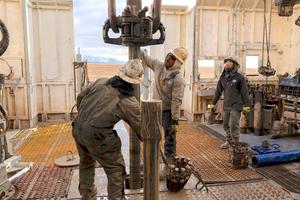A home in Crystal Beach, Texas being lifted out of the floodplain using FEMA funds. Patsy Lynch/FEMA
For every $1 that the U.S. government spends on resiliency projects, such as elevating buildings in flood zones and improving water management systems, society saves $6 on the future costs of natural disasters, according to a new report by the National Institute of Building Sciences (NIBS).
That’s higher than the 4-to-1 savings the institute originally found in a 2005 report, Bloomberg News reported. The increase is due in large measure to the growing impacts of climate change.
The institute, founded by Congress in 1974, examined 23 years of cost-benefit data from mitigation grants from the Federal Emergency Management Agency (FEMA), the Department of Housing and Urban Development (HUD), and the Economic Development Administration (EDA). The grants totaled $27 billion and led to an estimated $158 billion in savings: $68 billion in avoided deaths and injuries, $58 billion in avoided property damage, and $13 billion in avoided interruptions to business and temporary housing and other living costs for disaster victims.
The projects funded ranged from large-scale work, such as building floodgates and sea walls, to smaller projects, such as installing hurricane shutters and clearing vegetation near buildings, reported City Lab.
“Invest properly in mitigation, you’re going to get your money back — regardless of what your beliefs in climate change are,” Bryan Koon, head of NIBS’s Multihazard Mitigation Council, told Bloomberg News.
Last year was the most expensive year on record in the U.S. for natural disasters, with damage costs totaling $306 billion from 2017’s intense hurricanes, floods, and wildfires. Yet despite the rising costs of natural disasters, the Trump administration has proposed significantly reducing federal resiliency funding. In its first budget request, it recommended cutting FEMA’s pre-disaster mitigation grants in half, ending HUD’s Community Block Grant Program, and eliminating EDA entirely.



